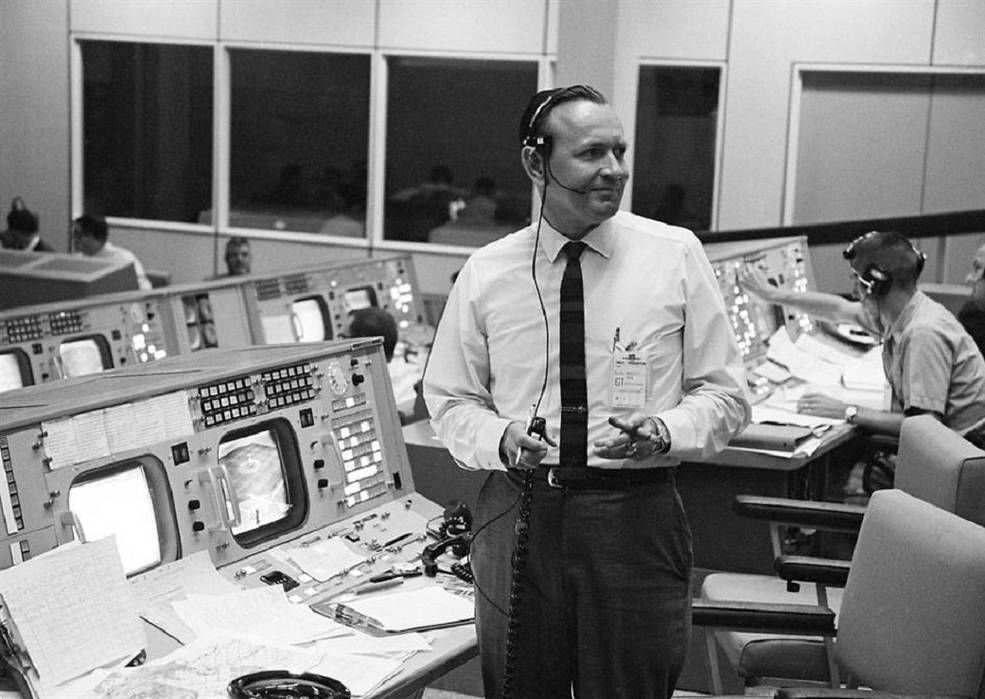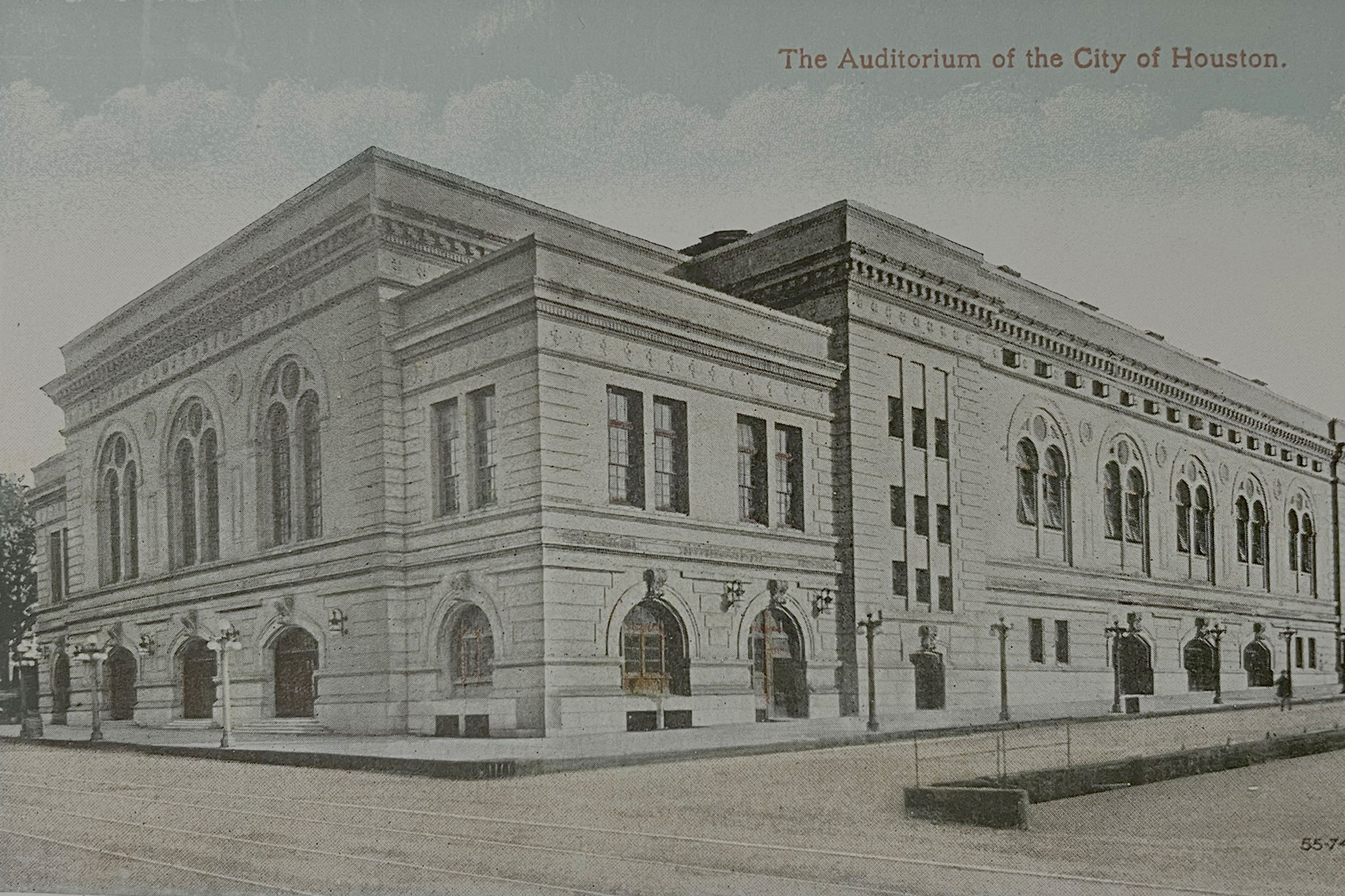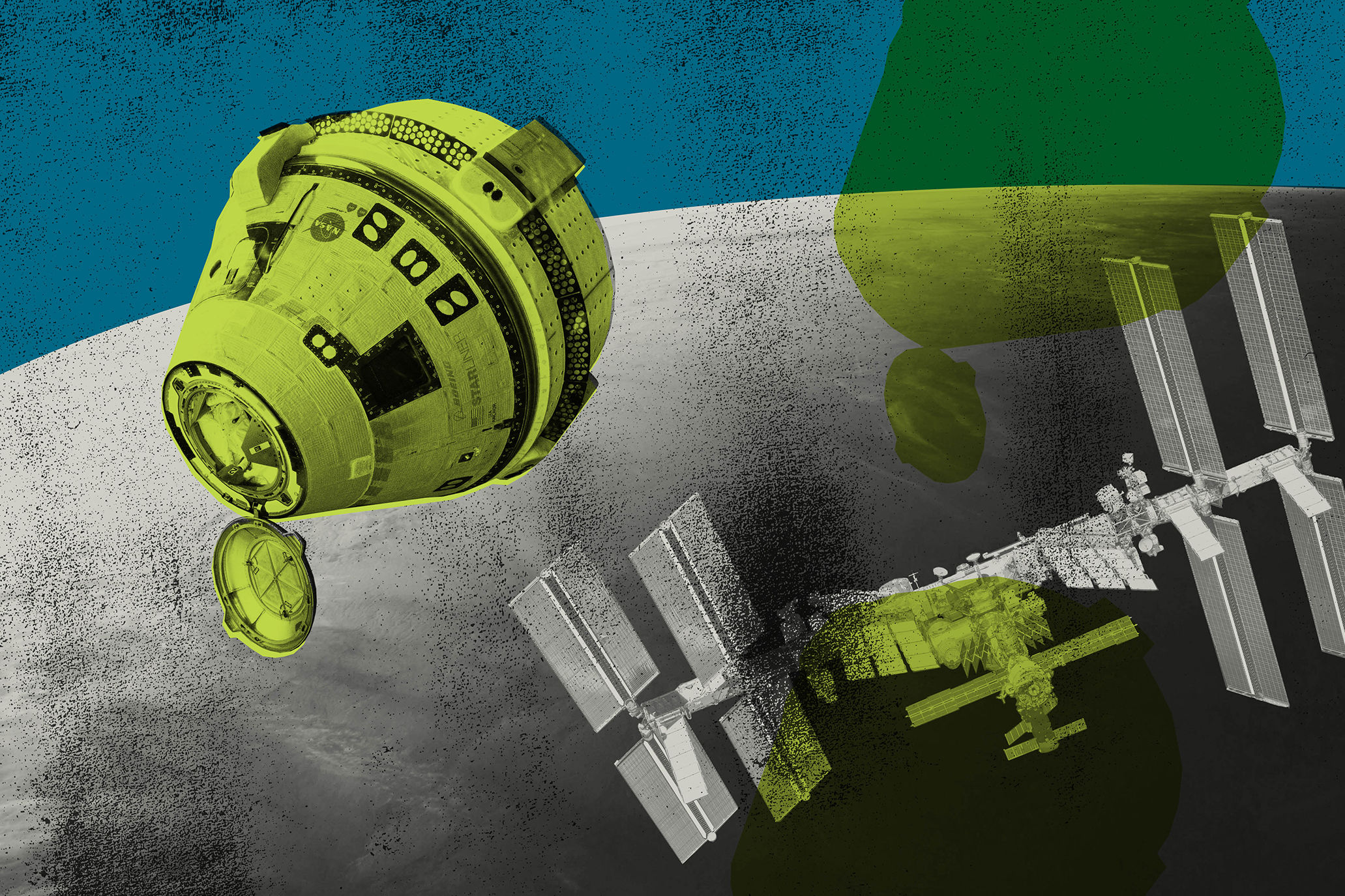Remembering Chris Kraft, NASA's First Flight Director

Image: NASA
Even in his retirement, Chris Kraft, who died this week in Houston at the age of 95, was casually a legend, and he knew it.
When I met him five years ago at his home in Clear Lake, I was just starting to write about NASA, and the Johnson Space Center’s place in it, but I knew exactly who Kraft was: NASA’s first flight director, the man who created the concept of Mission Control, and who oversaw missions from the heady early days of Mercury and Gemini to the mix of tragedy and triumph of the Apollo era.
He never rode in a rocket or even saw a launch in real life during his time as the first director of flight operations and then as the head of Houston's Johnson Space Center. Kraft was never a household name the way Alan Shepard, John Glenn and Neil Armstrong came to be, but during the Space Race in the 1960s those anxiously watching the news coverage often saw his face and heard his reassuring voice telling the world that everything was running exactly as planned. Photos of him jubilantly lighting up a cigar at moments of triumph became a familiar sight as NASA plowed on in its race to beat the Soviets.
Growing up in Virginia, it wasn’t obvious that Kraft's fate was to be behind some of the greatest feats in space exploration that the 20th century would ever see. He was one of the rare ones in the Space Race who didn’t grow up dreaming of becoming a pilot. Instead, while he was studying at Virginia Polytechnic Institute (he’d been rejected from serving in World War II due to a childhood hand injury) he studied mechanical engineering and then dove into aeronautics.
A whim of fate—Kraft got irritated when the job he’d taken after graduating with one of the first aeronautical engineering degrees insisted he couldn’t start without presenting his birth certificate—led Kraft to take up his second choice, working for the National Advisory Committee on Aeronautics, NASA’s predecessor. After working there for more than a decade he was tapped to join the Space Task Force, the small, select group working to put the first man into space.
In his role as the first flight director, Kraft came up with the phonebook-thick protocols designed to keep astronauts safe and accomplish mission objectives as he and the hive of minds at Mission Control (which he also created) sent them into orbit. He demanded excellence. “To err is human,” he once said, “but to do so more than once is contrary to Flight Operations Directorate policy.”
Once the Manned Space Center was established here in Houston in 1961, he, his wife Betty Anne, and their two children relocated to Clear Lake, just a few miles away from the site. Over the following decade he and the thousands of others worked together to get an American into space and then to send our astronauts to the moon, and as the flight director Kraft wielded tremendous influence. "If he was behind you, you had as much leverage as you needed; if he was against you, you were dead meat,” Sy Liebergot, of Mission Control, once said.
It was an accurate take. His power easily extended to the astronauts who were completing the missions Kraft and the rest of Mission Control were overseeing. After Scott Carpenter overshot his landing site by 250 nautical miles during Mercury-Atlas 7, Kraft blamed Carpenter and decided the astronaut would never go up again, and Carpenter never did. The same went for Wally Schirra and his Apollo 7 crew when Kraft felt they weren’t properly in line a few years later.
But Kraft was also loyal to those he thought deserved more. Deke Slayton was flagged from being assigned to any missions because of a heart issue, but Kraft kept pushing to get Slayton on a flight until he was finally allowed to go in 1975. Kraft had seen how Slayton had patiently put aside his own interests after doctors had grounded him a decade before. He felt Slayton deserved to go up, and even after he had taken over as the director of the Manned Space Center (soon to be renamed the Johnson Space Center) in 1972 he kept pushing until it happened, as Time recently recounted.
All of this was going through my mind as I settled into a chair in Kraft’s home office on that balmy spring day in 2014. Kraft was now a sweet-faced elderly man who’d met me at the door of his Clear Lake home and offered me a Coke.
I sat there sipping it, trying not to gawk at the models of the Saturn V rocket, the Lunar Landing Module, and the space shuttle, and the framed pictures all around us of Kraft with astronauts and presidents. My hands went clammy and my mouth felt like it was packed with moon dust as I opened my notebook, but I shoved all that aside and made sure my recorder was still going.
That day was a gift of education for me. Kraft talked bluntly and openly about his career and space exploration, both the triumphs and the tragedies. He never wasted an opportunity to learn from his experiences, he’d noted. Kraft touched on how, despite his efforts to make space exploration as safe as possible, he had to stand by helplessly when a fire broke out during a test run on the launchpad at Cape Canaveral, killing three astronauts in 1967.
And then there were the wins, like Christmas Eve 1968 when Apollo 8 went into orbit around the moon. Kraft found himself standing next to Bob Gilruth, the man who had formed the Space Task Group 10 years before, both of them silent and moved to tears of joy amidst the “glorious pandemonium” in Mission Control that night over how far they’d come, as he also recounted in his memoir, Flight.
Kraft told me how, walking across the Manned Space Center lot one night that same December, he’d tipped his head back in the darkness to study the marbled white orb of the moon, thinking that by the time the moon looked this way again they would already have sent a man to walk on it.
Kraft was right, and through the work of himself and more than 400,000 people on July 20, 1969 it happened. Over the following years, Kraft helped bring our astronauts home after the accident during Apollo 13, and guided the JSC as the agency moved from Apollo to Skylab to the space shuttle era. Meanwhile, he served at his church, remained a passionate golfer, stayed happily married to Betty Anne, who he’d known since high school, but he never stopped watching over the JSC and the federal space program. He would take the time to educate and talk through what was going on with countless reporters like me over the following decades.
After hearing of his death this week—he died on Monday, just two days after the 50th anniversary of the moon landing he’d helped make possible—I couldn’t stop thinking of how his death was the loss of both a great man and a particularly powerful voice for both the JSC and NASA. He never stopped caring about what he had helped build at the JSC, and he was always ready to speak openly about his concerns that the talent and culture that had been part of the JSC’s structure were being worn away by a lack of direction and a lack of interest.
But Kraft was still hopeful about the future of space exploration, he told me that day, and confident that this generation would, if given the opportunity, continue to push the boundaries to venture ever further into the solar system.
After hours of talking, it was time to go. He stood to walk me out, and as I glanced one last time at the models of rockets and space travel, I finally lost it. “Can I get your autograph?” I blurted out.
He laughed and scrawled his signature—Christopher Columbus Kraft—in my notebook. I felt ridiculous at the time, but now I’m glad I asked.
It was the hope that got me. He’d presided over great victories and enormous losses, and NASA had endured plenty more in the years since his retirement, but he’d never lost his faith, his belief about what we could accomplish if we could just decide we were going to do it. After all, he’d helped send astronauts to space when computers had only a fraction of the skills of today’s average smartphone.
Kraft was a man who knew the impossible just hadn’t been accomplished yet, because he'd helped do just that 50 years ago. He will be missed.




